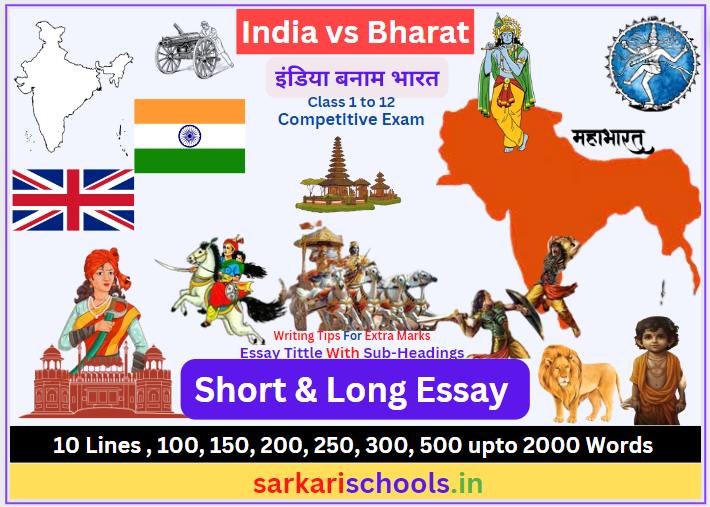Explore an engaging Essay On Holi in English For Class 1 to12. Learn about the vibrant traditions, cultural significance, and the joyous celebration of the Festival of Colors in this comprehensive essay. Perfect for students of all ages, from Class 1 to Class 12, to gain insights into the rich tapestry of Holi festivities.
Table of Contents

Essay On Holi in English For Class 1 to12
Explore an engaging and informative Essay on Holi in English suitable for students of Class 1 to 12. Uncover the cultural and festive significance, traditions, and joyous celebrations of the vibrant Festival of Colors. Perfect for students at all academic levels, this essay provides valuable insights into the rich tapestry of Holi, making it an ideal resource for learning and celebration. Do you know Holi Kab Hai 2024.
- Diwali Essay in English
- How to Write Essay in English Step-by-Step
- Essay on Importance of Fitness in English
Essay On Holi in English For Class 1-2
10 Lines Essay On Holi in English
- Holi is a vibrant and colorful Hindu festival celebrated in India.
- It marks the arrival of spring and is also known as the Festival of Colors.
- People play with colored powders, water balloons, and indulge in joyful festivities.
- The festival promotes unity and the breaking down of social barriers.
- Families and friends come together to celebrate with enthusiasm and merriment.
- Traditional Holi sweets like gujiya and thandai are savored during the celebrations.
- Bonfires are lit on the eve of Holi, symbolizing the triumph of good over evil.
- Holi has cultural and mythological significance, associated with various legends.
- It is a time when people forgive and forget past grievances, fostering harmony.
- Holi is a joyous occasion that spreads happiness, love, and the spirit of togetherness.
Essay On Holi in English For Class 3-4
100 Words Essay On Holi in English
Holi, the festival of colors, is celebrated with great enthusiasm in India. It marks the triumph of good over evil and the arrival of spring. People joyfully splash vibrant colors on each other, forgetting differences and embracing unity. The festival is known for its lively atmosphere, cultural richness, and the spirit of togetherness it fosters. Families and friends come together to share sweets, play with colors, and dance to traditional music. Holi also holds mythological significance, symbolizing the victory of Lord Krishna over the demoness Holika. This short but lively festival brings people of all ages and backgrounds closer in a riot of color and happiness.
Essay On Holi in English For Class 5
150 Words Essay On Holi in English
Holi is a colorful and exciting festival celebrated in India. It is also known as the Festival of Colors. People eagerly await Holi, which usually comes in spring. On this day, everyone plays with bright powders, water balloons, and colored water. Friends and family gather to share laughter, joy, and sweets.
Before Holi, a bonfire is lit to symbolize the victory of good over evil. The next day is when the real fun begins! People of all ages, young and old, join in the festivities, splashing each other with colors. It’s a time when people forget their differences and come together in a playful spirit.
Holi is not just about colors; it’s also about spreading happiness and love. Sweets like gujiya and drinks like thandai are enjoyed by everyone. Holi teaches us to embrace joy, forgive others, and celebrate the beauty of diversity. It’s a day filled with laughter, fun, and the warmth of togetherness.
Essay On Holi in English For Class 6
200 Words Essay On Holi in English
Holi, also known as the Festival of Colors, is one of the most joyful and lively festivals celebrated in India. It usually comes in spring, a season filled with flowers and sunshine. Holi is a time when friends and family gather to play with bright colors, creating a spectacular and vibrant atmosphere.
Before the colorful play begins, people light bonfires on the eve of Holi. This is called Holika Dahan, symbolizing the victory of good over evil. The next day is when the real fun happens! People of all ages run around joyfully, throwing colored powders, water balloons, and enjoying delicious treats.
Holi is more than just a festival of colors; it’s a day to spread happiness and love. Everyone, young and old, participates in the festivities, forgetting differences and embracing the spirit of togetherness. Sweets like gujiya and special drinks like thandai are shared with friends and neighbors.
Holi teaches us important lessons – to celebrate diversity, forgive and forget, and appreciate the joyous moments of life. It’s a day filled with laughter, music, and the warmth of love, making it a favorite festival for kids and adults alike.
Essay On Holi in English For Class 7
250 Words Essay On Holi in English
Holi, known as the Festival of Colors, is a vibrant and exuberant celebration in India, marking the arrival of spring. It usually falls in March, creating an atmosphere of joy and festivity. The festival is eagerly awaited by people of all ages who come together to revel in the colorful merriment.
The festivities commence with Holika Dahan, a ritual where bonfires are lit on the eve of Holi. This symbolizes the victory of good over evil and the triumph of light over darkness. The next day, people play with vibrant colored powders, water balloons, and engage in spirited water fights. The air is filled with laughter, music, and the joyous shouts of “Holi Hai!”
Families and friends gather to share traditional sweets like gujiya and drinks like thandai. The boundaries between people dissolve as everyone, regardless of age, caste, or creed, participates in the revelry. Holi encourages unity, breaking down social barriers, and fostering a sense of community.
Holi also holds cultural and mythological significance, associated with various legends. The festival teaches valuable lessons of forgiveness, letting go of grudges, and embracing the spirit of love and harmony.
In essence, Holi is a celebration of life, color, and the renewal of nature. It brings people together in a riot of colors and exemplifies the beauty of diversity and togetherness. It is a day when joy knows no bounds, and the vibrant hues of Holi leave an indelible mark on the hearts of those who celebrate it.
Essay On Holi in English For Class 8
300 Words Essay On Holi in English
Holi: A Riot of Colors and Joy
Introduction: Holi, the Festival of Colors, is a lively and jubilant celebration in India, marking the arrival of spring. This exuberant festival is eagerly awaited by people of all ages, creating an atmosphere of joy and festivity.
Holika Dahan: Triumph of Good over Evil: The festivities commence with Holika Dahan, where bonfires are lit on the eve of Holi. This symbolic ritual represents the victory of good over evil, as people gather around to witness the burning of Holika effigies.
Playful Revelry with Colors: The heart of Holi lies in the playful revelry with colors. On the day of Holi, people joyfully throw vibrant colored powders and engage in spirited water fights. Laughter, music, and shouts of “Holi Hai” fill the air, creating an electrifying atmosphere.
Traditional Sweets and Treats: Families and friends come together to share traditional sweets like gujiya and indulge in special drinks like thandai. The exchange of these delectable treats adds a sweet touch to the celebrations.
Unity in Diversity: Holi is a festival that transcends boundaries, bringing people of all ages, castes, and creeds together. It fosters unity and breaks down social barriers as everyone partakes in the revelry, symbolizing the beauty of diversity.
Cultural and Mythological Significance: Beyond the colors and festivities, Holi holds cultural and mythological significance. Associated with various legends, the festival teaches valuable lessons of forgiveness, letting go of grudges, and embracing love and harmony.
Conclusion: In essence, Holi is a celebration of life, color, and the renewal of nature. It exemplifies the beauty of diversity, encourages unity, and leaves an indelible mark on the hearts of those who partake in its vibrant hues. Holi is not just a festival; it’s a reflection of joy, togetherness, and the triumph of good over evil.
Essay On Holi in English For Class 9-10
500 Words Essay On Holi in English
Holi: Embracing the Spectrum of Joy
Holi, the Festival of Colors, is an exuberant and cherished celebration that holds a special place in the hearts of people in India. This lively festival, usually celebrated in March, marks the arrival of spring and the triumph of good over evil. With its vibrant colors, spirited music, and joyous atmosphere, Holi is a time when communities come together to revel in the spirit of unity, love, and merriment.
Holika Dahan: Igniting the Flames of Tradition
The festivities kick off with Holika Dahan, a symbolic ritual held on the eve of Holi. Bonfires are lit to commemorate the victory of good over evil, representing the burning of Holika, a demoness. This ritual reinforces the cultural and mythological significance of Holi, adding a touch of tradition to the vibrant celebrations.
Colors Galore: The Essence of Holi
The heart of Holi lies in the playful and riotous splashing of colors. On the day of Holi, people of all ages come together, armed with bright colored powders and water balloons. Streets and open spaces become canvases for a kaleidoscope of colors, as laughter and shouts of “Bura Na Mano, Holi Hai!” fill the air. This colorful chaos symbolizes the breaking down of social barriers, as people, regardless of age, caste, or creed, engage in the joyous revelry.
The Joy of Togetherness: Community Bonding
Holi is not just a festival; it is a celebration of togetherness. Families and friends gather to partake in the festivities, reinforcing the sense of community. The exchange of sweets, particularly the traditional gujiya, and the consumption of special drinks like thandai add a delightful culinary dimension to the celebrations. It’s a time when relationships are strengthened, and joy is shared with loved ones.
Unity in Diversity: Breaking Barriers
One of the most remarkable aspects of Holi is its ability to break down social barriers. The festival is a great equalizer, where distinctions based on age, gender, or societal status are forgotten. In the kaleidoscope of colors, everyone is equal, and the spirit of unity prevails. Holi exemplifies the beauty of diversity, fostering an environment where people come together in shared joy.
Cultural and Mythological Richness: Lessons in Tradition
Beyond the colors and revelry, Holi carries deep cultural and mythological significance. Legends associated with Holi, such as the playful antics of Lord Krishna with the gopis and the burning of Holika, are passed down through generations. The festival imparts valuable lessons of forgiveness, letting go of animosities, and embracing love and harmony.
Conclusion: A Tapestry of Happiness
In conclusion, Holi is not just a festival; it is a tapestry of happiness woven with the threads of tradition, culture, and the spirit of togetherness. It is a celebration that transcends boundaries, inviting people from all walks of life to immerse themselves in the joyous spectrum of colors. Holi is a reminder that, amidst the diverse hues of life, the threads of love and unity bind us all together in a beautiful and harmonious dance.
Essay On Holi in English For Class 11-12
700 Words Essay On Holi in English
Holi: A Kaleidoscope of Colors, Culture, and Celebration
Holi, the Festival of Colors, is a vibrant and exuberant celebration that captivates the heart and soul of India. This joyous festival, typically observed in March, heralds the arrival of spring, symbolizing the triumph of good over evil. Holi is a spectacle of colors, music, and communal revelry that transcends religious and cultural boundaries, bringing people from all walks of life together in a riot of joy and harmony.
Holika Dahan: A Sacred Prelude
The festivities commence with Holika Dahan, an auspicious ritual held on the eve of Holi. Bonfires are lit to commemorate the victory of Prahlada over the demonic Holika, symbolizing the triumph of virtue over vice. Communities gather around these bonfires, performing traditional prayers and rituals, reinforcing the cultural and mythological underpinnings of Holi.
Colors Unleashed: The Essence of Holi Revelry
The heart of Holi lies in the playful and unabashed splashing of colors. On the day of Holi, communities transform into kaleidoscopic landscapes as people engage in a spirited exchange of colored powders, water balloons, and joyous shouts of “Holi Hai!” Streets come alive with the infectious energy of revelers, creating a tapestry of colors that mirrors the diversity of Indian culture.
The playfulness of Holi extends beyond the streets into homes, where families and friends come together to celebrate. The air is filled with the laughter of children, the beats of traditional Holi songs, and the aromatic scents of delicacies being prepared for the occasion.
Traditional Sweets and Delicacies: A Culinary Extravaganza
No celebration is complete without a culinary extravaganza, and Holi is no exception. Traditional sweets like gujiya, a delectable dumpling filled with khoya and dry fruits, become an integral part of Holi feasts. Thandai, a refreshing beverage infused with nuts and aromatic spices, adds a cool respite to the exuberant festivities.
Sharing these culinary delights not only satisfies the taste buds but also serves as a symbol of togetherness and communal joy. The act of exchanging sweets becomes a gesture of goodwill, reinforcing the bonds of friendship and camaraderie.
Unity in Diversity: Breaking Down Barriers
Holi is renowned for its ability to break down social and cultural barriers. It is a time when distinctions of age, gender, caste, and creed fade away, and the essence of unity prevails. The vibrant colors serve as a metaphor for the social equality that Holi promotes. In the kaleidoscope of hues, everyone is equal, fostering a sense of brotherhood and community spirit.
Communities organize public celebrations, inviting people from various backgrounds to partake in the festivities. These inclusive events showcase the cultural diversity of India, emphasizing the idea that Holi is a celebration for all to enjoy, irrespective of their cultural or religious affiliations.
Cultural and Mythological Roots: Lessons in Tradition
Beyond the revelry, Holi carries deep cultural and mythological significance. Legends associated with Holi, such as the mischievous play of Lord Krishna with the gopis, exemplify the spirit of joy, love, and camaraderie. The festival also commemorates the burning of Holika, symbolizing the victory of good over evil.
The mythological stories associated with Holi are not just tales of the past but living traditions passed down through generations. They serve as lessons in morality, emphasizing the values of righteousness, humility, and the ultimate triumph of virtue.
Conclusion: A Tapestry of Joy and Harmony
In conclusion, Holi is more than a festival; it is a tapestry woven with threads of joy, cultural richness, and unity. It is a celebration that transcends boundaries, bringing people together in a harmonious dance of colors. Holi teaches valuable lessons of cultural appreciation, communal harmony, and the vibrant tapestry of diversity that defines India. As the colors of Holi spread joy and laughter, they also paint a vivid picture of a nation united in its celebration of life, love, and the shared spirit of togetherness.




